Inbox and Environment News: issue 421
September 15 - 21, 2019: Issue 421
Climate Change And Our Community Public Meeting
Hosted by One Eighty, Stop Adani Avalon, and Stop Adani Mackellar
Monday, September 16, 2019 at 7 PM – 9 PM
Avalon Beach Bowling & Recreation Club
Bowling Green Ln, Avalon
Earlier this year, the City of Sydney declared a climate emergency, followed by North Sydney Council declaring the same.
Australia's current undertaking to reduce the impacts of global warming are predicted to increase global temperatures by 2–3°C, well above the 1.5°C Paris Agreement commitment to which Australia is party. The Bureau of Meteorology has noted significantly higher temperatures than usual this winter, with rainfall well below average. Climate change has never felt more real. An intangible concept is becoming increasingly palpable.
We are inviting all people—young and old, climate friends and foes—to join us for a conversation on September 16 about climate action.
We will have speakers from the Global Climate Strike and climate change advocacy groups, information about the School Strike and #StopAdani and will screen segments of Sir David Attenborough's 'Climate Change: The Facts' documentary.
A finalised agenda will be announced closer to the date.
Come and be informed. We all need to participate in the preservation of our one and only habitable planet!
Please invite as many friends and family as you wish.
Register your free attendance with the Eventbrite link.
Student Climate Strikers Rally On Friday 20 September
This is your invitation to the third and biggest School Strike 4 Climate yet!
The massive student-led movement is building power around the world, and they're asking all of us to stand with them on 20 September for a day of high-impact global action.
In March, over 150,000 students and supporters across Australia striked for climate action. Since then, they're only stronger and more organised – capturing hearts and minds globally, and putting huge pressure on our leaders to step up.
Australia is in the thick of the climate crisis. Our emissions are increasing, and our governments refuse to stop massive new fossil fuel projects like Adani’s coal mine.
Together, we can turn all this around. On 20 September, let's all stand with the students as they strike school and gather to demand climate action from our leaders here and around the world.
Everyone is invited. And everyone is needed. If you’re an adult, join the students in solidarity!
In Australia, strikers are calling for Governments to commit to:
- No new coal, oil and gas projects, including the Adani mine.
- 100% renewable energy generation & exports by 2030
- Fund a just transition & job creation for all fossil-fuel industry workers & communities.
Australian School Strike 4 Climate Student Organisers said:
“Australia is already on the frontlines of the climate crisis. Our Government should be helping to transform our economy and society in ways that work for people and our planet. But instead, they are helping billionaire companies like Adani open the floodgates to new coal, oil and gas projects, which put all of us in the firing line of more dangerous climate impacts.
“History reminds us that politicians rarely lead. They need people powered movements to push them. By downing tools at a global scale, we’ll show our politicians that all of us want climate justice, because the alternative is unthinkable,
“We’re striking in solidarity with everyone who’s being hurt by the climate crisis already and everyone who will be impacted if we don’t act now: First Nations people, workers, young people, mining communities and more.
“Everyone is invited. Everyone is needed. On March 15, 1.6 million of us went on strike globally. On September 20, we’re going even bigger. If you’re an adult, please take the day off and invite your friends, workmates and families to join us.”
Inspired by Swedish teenager Greta Thunberg, teenagers in regional Victoria kicked off the school strike movement in Australia last October, with 20,000 students striking nationally in November and then 150,000 in March. A larger attendance is expected on September 20 as concern about the climate crisis grows.
Unable to vote at the recent Federal Election, students are not deterred by the outcome, but committed to use the September strike to build a bigger, bolder movement to fight for climate justice.
To everyone who cares about a safe climate future, this is your invitation to join the Global #ClimateStrike on September 20 - people around the world standing up to confront the climate crisis when our politicians won’t.
Australia is already on the frontlines of the climate crisis. Prolonged drought. Flash flooding. Catastrophic bushfires, severe cyclones and heatwaves. But just at the time when we need to ramp up climate solutions, we have elected a Government that wants to open the floodgates to new coal, oil and gas projects that put all of us at risk.
WHEN: September 20, 2019, 12pm - 2pm
WHERE: The Domain, Art Gallery Rd, Sydney (next to the Art Gallery of NSW)
For more visit: www.schoolstrike4climate.com
.jpg?timestamp=1567646208125)
Threatened Species Habitat Destruction In Australia Shows Federal Laws Are Broken
September 9, 2019: University of Queensland
Human activities have destroyed more than 7.7 million hectares of threatened species habitat, revealing critical failures with Australia's federal environmental protection laws.
A University of Queensland-led study has revealed that less than seven per cent of this destruction was referred to the Federal Government for assessment, scrutiny required under Australia's flagship environmental legislation, the Environment Protection and Biodiversity Conservation Act 1999 (EPBC Act).
Lead author and PhD candidate in UQ's School of Earth and Environmental Sciences, Michelle Ward, said habitat for our most imperiled species should be regulated, maintained, and fully protected.
"It's alarming for a species to lose 25 per cent of its habitat in less than two decades -- it must be addressed," she said.
"Species threatened with extinction are a matter of national environmental significance and need to be protected and conserved."
The authors looked at the distributions of 1,638 terrestrial threatened species, terrestrial migratory species and threatened ecological communities, quantifying the loss of potential habitat and communities since the EPBC Act came into force.
The team found that more than 7.7 million hectares of potential habitat and communities were cleared between 2000 and 2017.
While 1,390 or 84 per cent of species suffered loss, the Mount Cooper striped skink, Keighery's macarthuria and the Southern black-throated finch lost 25 per cent, 23 per cent and 10 per cent of potential habitat respectively.
The koala lost approximately one million hectares of habitat since 2000.
Dr Martin Taylor from the World Wide Fund for Nature-Australia, one of the paper's senior authors, said it was a national scandal which should outrage the community.
"It's hard for any reasonable person to see how seven million hectares of unassessed, unapproved destruction of threatened species habitat can be other than unlawful.
"The government is failing to enforce a law designed to halt Australia's extinction crisis.
"It's as if the cops are asleep at the wheel, while all the shops up and down the street are looted.
"Most of the destruction is to create livestock pasture.
"Why are agricultural developers not referring their clearing for assessment?
"This cannot be allowed to continue," he said.
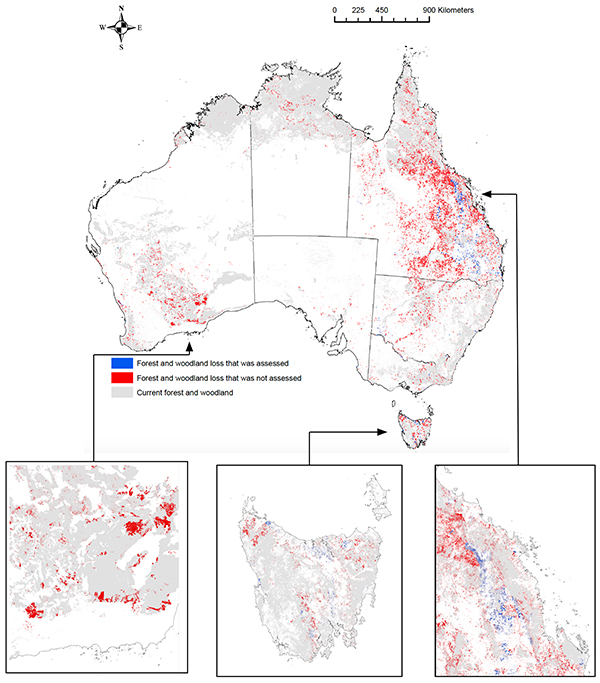
Loss of potential habitat for threatened species and migratory species, and threatened ecological communities. Dark blue represents compliant loss (or loss that occurred with a referral under the EPBC Act) and dark red represents non-compliant loss (or loss that occurred without a referral under the EPBC Act).
Michelle S. Ward, Jeremy S. Simmonds, April E. Reside, James E. M. Watson, Jonathan R. Rhodes, Hugh P. Possingham, James Trezise, Rachel Fletcher, Lindsey File, Martin Taylor. Lots of loss with little scrutiny: The attrition of habitat critical for threatened species in Australia. Conservation Science and Practice, 2019; DOI: 10.1111/csp2.117
September Is Biodiversity Month
Biodiversity Month is held in September each year and aims to promote the importance of protecting, conserving and improving biodiversity both within Pittwater and Australia and across the world.
.
Our Readers have shown they value the magnificent native birds and animals we are so lucky to have living here, and many residents contribute to restoring local reserves and habitat through volunteer work as Bush Carers.
.
However, more Australian native species are headed for extinction. We already have the highest rate of mammal extinctions in the world… in fact, we’re the fourth worst for all animal extinctions globally. This month what can we all do as individuals to increase Pittwater's biodiversity and protect the original inhabitants?
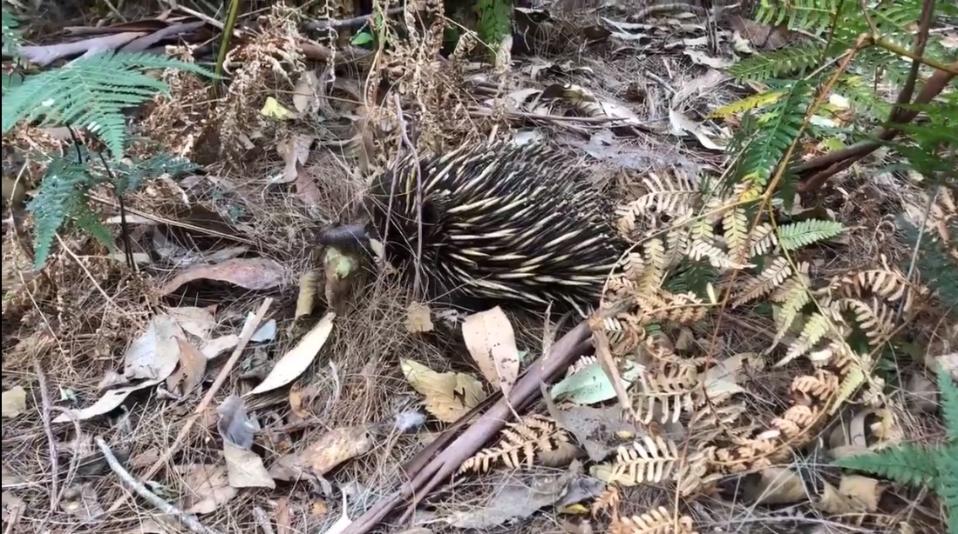
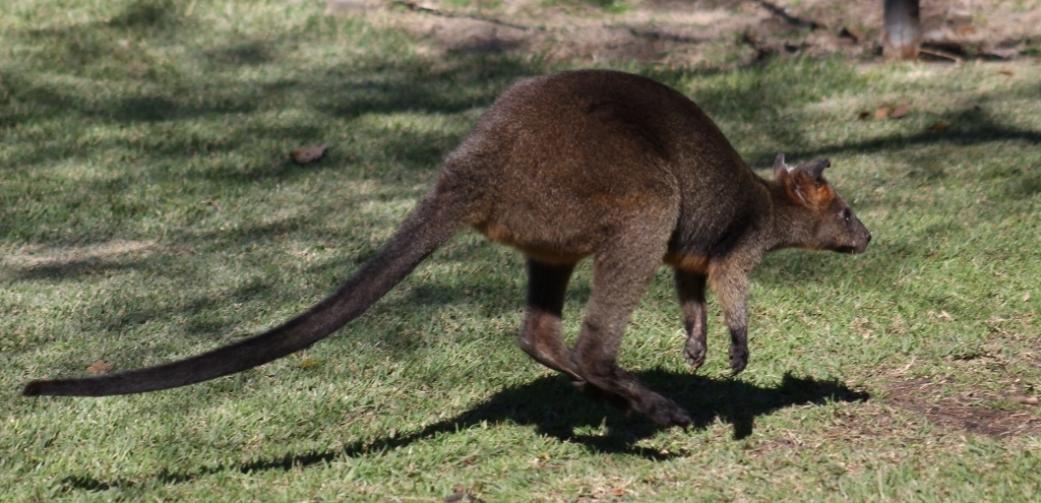
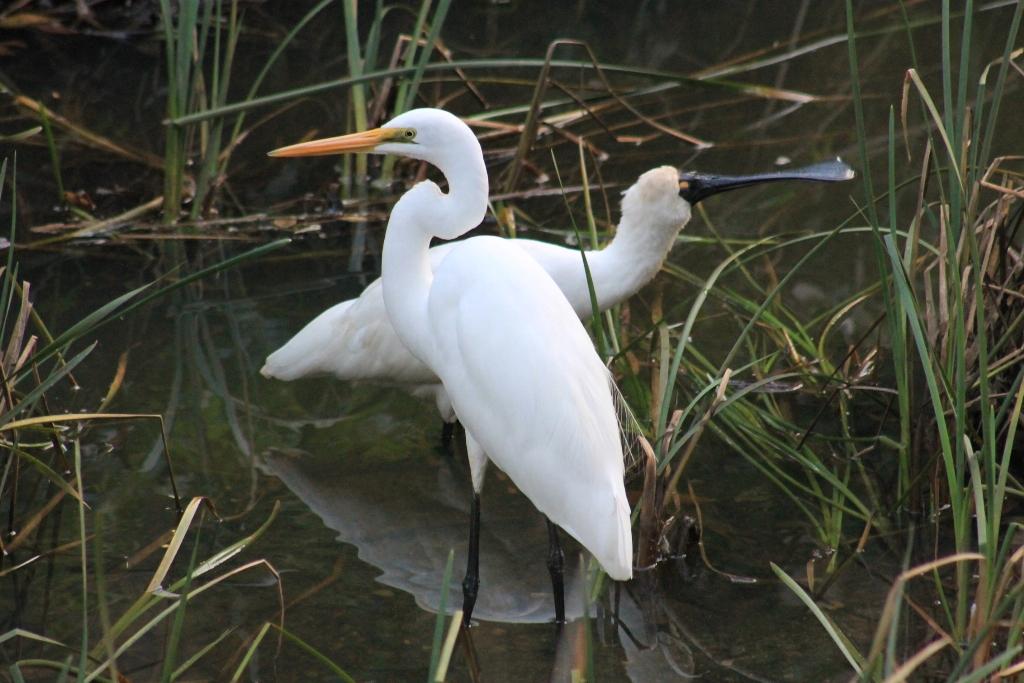
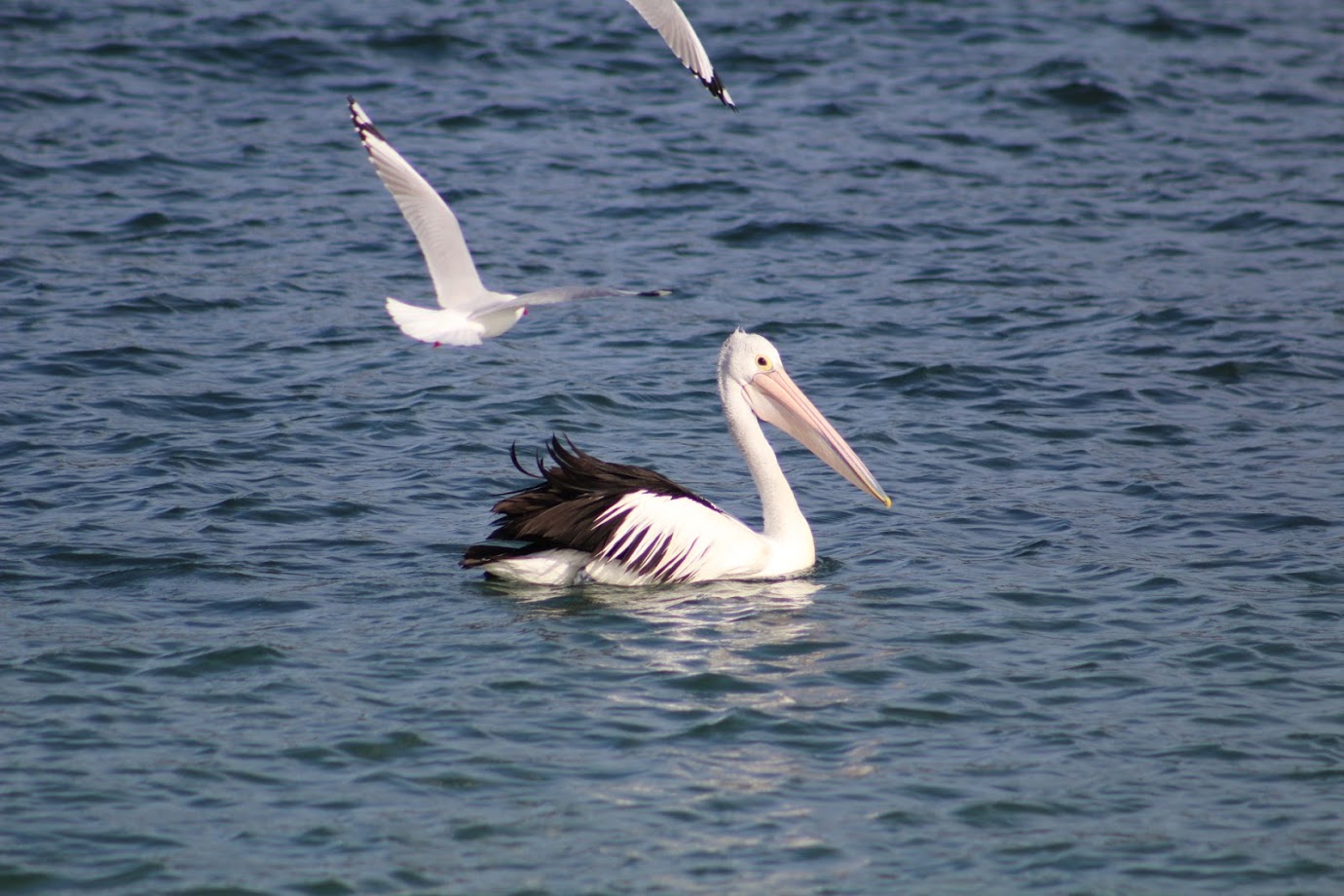
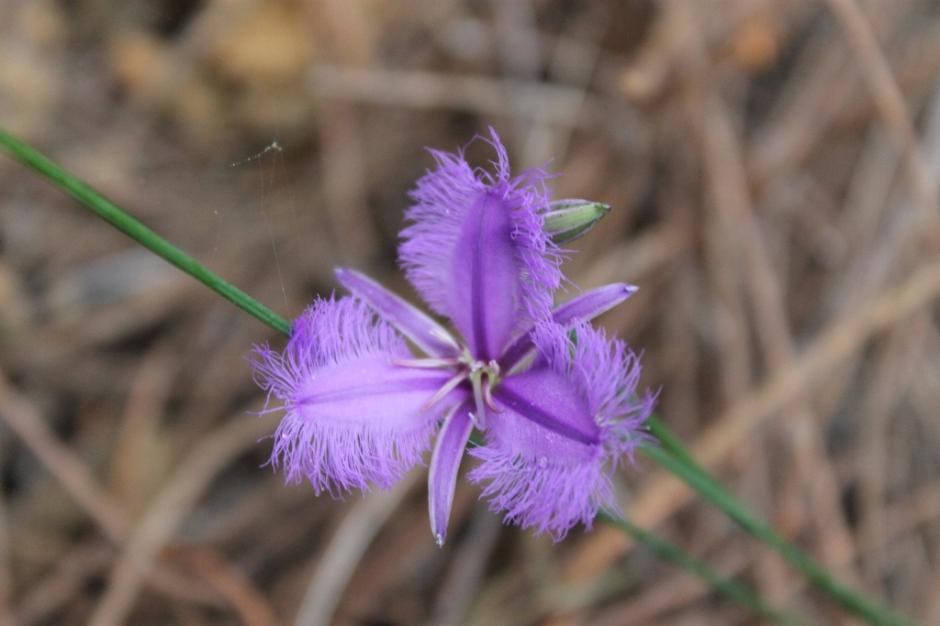
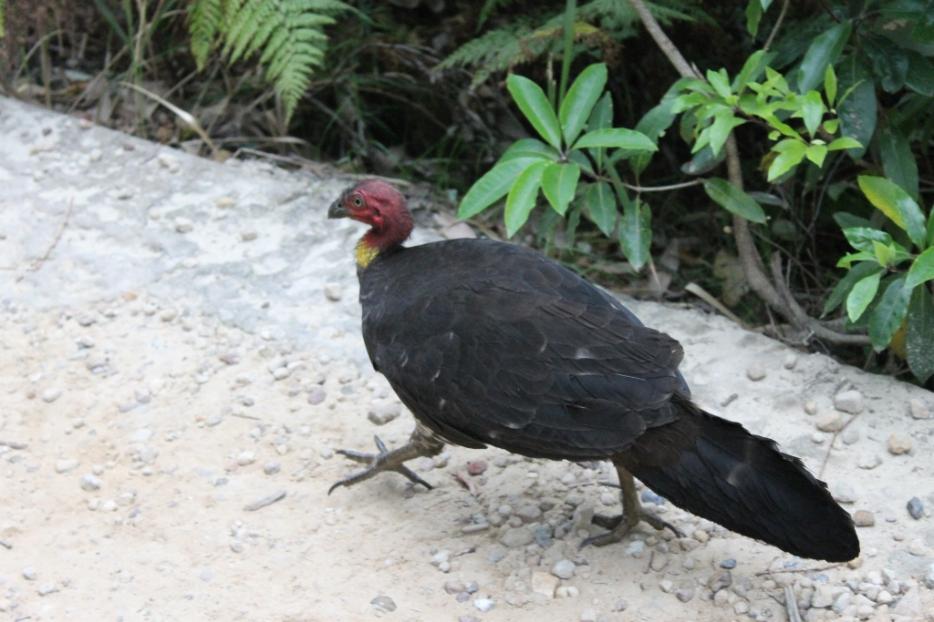
Photos: Echidna by Lynleigh Greig, Sydney Wildlife, Wallaby at Currawong by A J Guesdon, Egret and Spoonbill in Careel Creek by A J Guesdon, Pelican on Station Beach by A J Guesdon, Fringed Violet (Thysanotus tuberosus) and Bush Turkey (Alectura lathami) on Barrenjoey Headland by A J Guesdon.
Australian Birds String Together Meaningless Sounds To Make 'Words'
September 9, 2019
Stringing together meaningless sounds to create meaningful signals is a core feature of human language. Investigating whether animals share this basic combinatorial ability has been complicated by difficulties in identifying whether animal vocalisations are made from smaller, meaningless sounds, or building blocks. New research by scientists at the Universities of Zurich, Exeter, Warwick, Macquarie and New South Wales has addressed this question in the calls of the chestnut-crowned babbler (Pomatostomus ruficeps) -- a highly social bird from the Australian Outback.
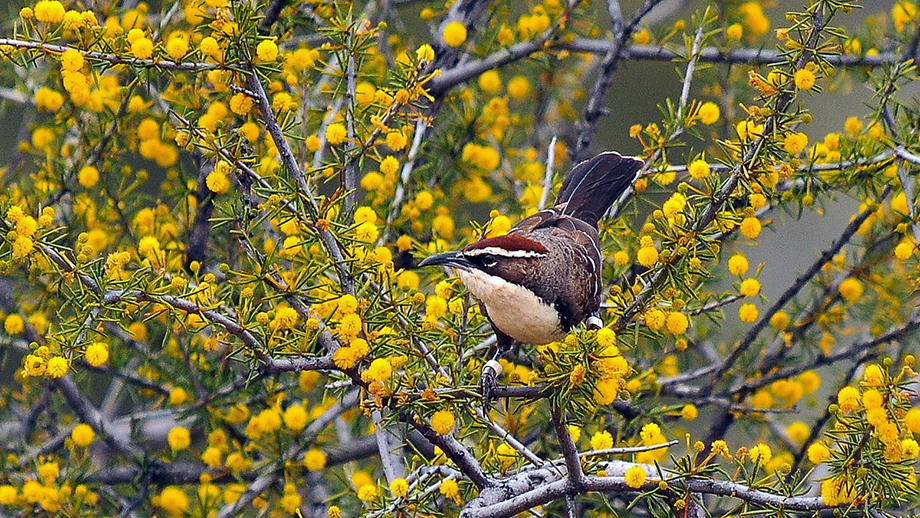
The chestnut-crowned babbler examined in the study lives in the Australian outback. (Image: Niall Stopford)
Meaningful calls composed of distinct sounds
Previous research demonstrated that chestnut-crowned babbler calls seemed to be composed of two different sounds "A" and "B" in different arrangements when performing specific behaviors. When flying, the birds produced a flight call "AB," but when feeding chicks in the nest they emitted "BAB" provisioning calls. In the current study, the authors used playback experiments, previously used to test speech-sound discrimination in human infants, to probe the perception of the sound elements in babblers. "Through systematic comparisons we tested which of the elements babblers perceived as equivalent or different sounds. In doing so, we were able to confirm that the calls could be broken up into two perceptually distinct sounds that are shared across the calls in different arrangements," explains Sabrina Engesser from the University of Zurich, lead author on the study. "Furthermore, none of the comprising elements carried the meaning of the calls, confirming the elements are meaningless," she adds.
"This system is reminiscent of the way humans use sounds to form meaningful words," says co-author Andy Russell from the University of Exeter. The research findings, which are published in the journal Proceedings of the National Academy of Sciences, reveal a potential early step in the emergence of the elaborate combinatorial sound system characterizing human language.
Understanding the evolution of communication
Last author Simon Townsend from the University of Zurich and the University of Warwick says: "This is the first time that the meaning-generating building blocks of a non-human communication system have been experimentally identified." He concludes: "Although the building blocks in the babbler system may be of a very simple kind, it might still help us understand how combinatoriality initially evolved in humans."
These findings raise the exciting possibility that the capacity to generate meaning from meaningless building blocks is widespread in animals. However, the authors caution that there are still considerable differences between such systems and word generation in language. They emphasize that a focus on the acoustic distinctiveness of sounds in meaningful animal vocalizations offers a promising approach to investigate the building blocks of non-human animal communication systems.
Sabrina Engesser, Jennifer L. Holub, Louis G. O’Neill, Andrew F. Russell, and Simon W. Townsend. Chestnut-crowned babbler calls are composed of meaningless shared building blocks. PNAS, 2019 DOI: 10.1073/pnas.1819513116
Aussie Bread Tags Collection Points
Collecting bread tags enables us to provide wheelchairs that change the life of disabled people in need, as well as keeping the tags out of landfill to help to preserve the environment.
Bread Tags for Wheelchairs was started in South Africa in 2006 by Mary Honeybun. It is a community program where individuals and organisations collect bread tags, which are sold to recyclers. The money raised pays for wheelchairs for the less fortunate which are purchased through a local pharmacy. Currently about 500kg of bread tags are collected a month in South Africa, funding 2-3 wheelchairs.
We have been collecting bread tags nationally in Australia since September 2018 and now have more than 100 collection points across the country. In February 2019 we started local recycling through Transmutation - Reduce, Reuse and Recycle in Robe, SA, where our tags are recycled into products such as door knobs and bowls. Tags from some states are still sent to South Africa where a plastics company called Zibo recycles them into seedling trays.
These humble bits of polystyrene can make a real difference so get your friends, family, school, workplace and church involved. Ask school tuck shops and boarding school kitchens, child care centres, aged care facilities, hospitals, cafes and fast food outlets to collect for you - they get through a lot of bread!
All the information and signage for collecting or setting up a public collection point is on our website.
Local Collectors
Lesley Flood
Warriewood
Please email for address - lespatflood@gmail.com
Jodie Streckeisen
Balgowlah
Please email for the address - streckeisenjodie@gmail.com

Mona Vale Garden Club's 48th Spring Flower Show
Saturday, 28 September 2019 - 10:00am to 3:00pm
Wonderful display of flowers, potted plants, vegetables, herbs and floral art. Plants, white elephant goods and cakes for sale. Raffles. Refreshments available.
Gold coin entry; $2.00 - children no charge
Ted Blackwood Hall
Cnr Jacksons & Boondah Roads
Warriewood

Leave That Baby Bird Alone!
Spring 2019: BirdLife Australia
Seeing a helpless baby bird stranded out of its nest tugs at the heart-strings of most people, but there is a simple message—leave that chick alone!
Spring is a time when many birds breed, which inevitably results in plenty of fluffy chicks in the neighbourhood, and some of them give a good impression of being abandoned and helpless when they’re on the ground.
However, don’t be fooled—you should resist the urge to rescue the bird, because usually they don’t need your assistance at all. Most just need to be left alone, and removing a baby bird from its environment is not always in its best interests.
People should ignore the ‘cute factor’ and dispassionately assess whether the bird really needs your help. Ask yourself these questions: Is the chick visibly injured? Is it in real danger of being killed or injured? If the answer is no, leave it alone—it’s the best thing to do.
Sometimes baby birds land on the ground when they’re learning to fly, but that doesn’t mean that they need your assistance. Usually their parents are nearby, waiting to feed and look after their young once you’ve left the scene.
If you find a nest that’s been blown onto the ground, replace it and its contents in a nearby shrub or tree so that the parent birds can continue to attend it. They will find it.
If you find a young Tawny Frogmouth on the ground, simply replace it in a nearby tree. It’s the safest place for it.
If you find a baby Masked Lapwing or plover on the ground, leave it where it is; after all, the ground is where they live. Its parents will be nearby (they’re probably swooping you right now).
If you find a chick on the ground and it is (1) clearly unattended by its parents (watch this from a distance for some time so you’re not keeping them away); and (2) it’s in imminent danger from cats, dogs or traffic; and (3) it can’t be left in a safe place nearby: do not attempt to look after the bird on your own.
Place it in a dark, warm, dry place (such as a cardboard box with plenty of air holes, and padding such as a towel inside), keep it safe from the family cats and dogs, and then contact your local wildlife rescue shelter or vet straight away.
Remember, cute is not the same as helpless.
Sydney Wildlife: 9413 4300
WIRES: 1300 094 737
Barrenjoey Seal Colony Growing
Jools Farrell, local ORRCA member, reminds us that at present the Australian Fur Seal Colony at Barrenjoey is growing. In mid July there were 9 but there will be a lot more as we had up to 20 last year.
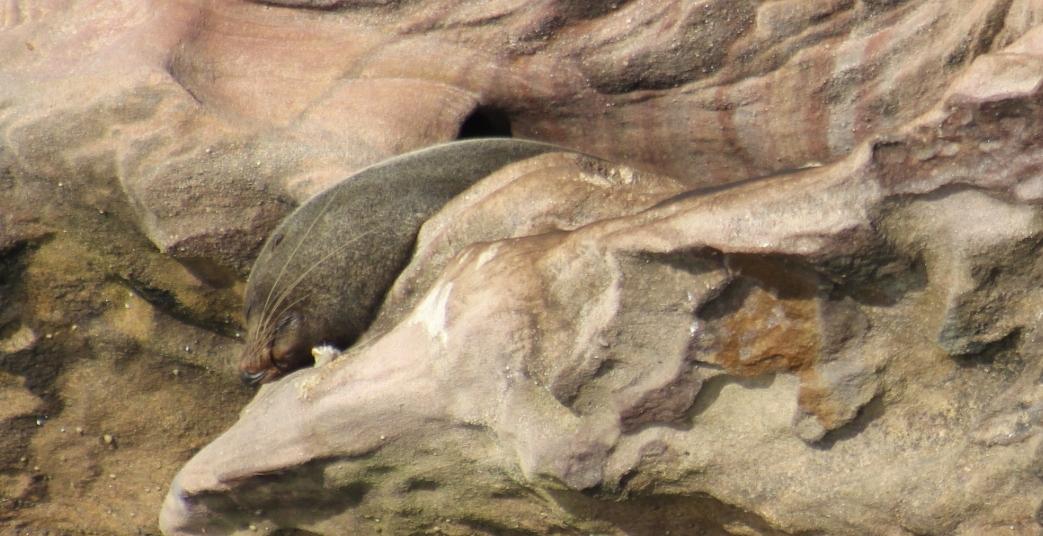
Please remember that legally you must stay a minimum of 40 metres away from seals, especially if they come ashore on the estuary beaches or ocean beaches to rest.
Also please keep an eye out for them if you are out in a boat as they do venture out of this spot to feed on the estuary or around Barrenjoey Headland. In recent years they have been seen everywhere from Barrenjoey to Clareville and Church Point.
Please do not attempt to feed them as they get plenty of food here in Pittwater. Please also do not attempt to swim with them, Jools asks.
If you do see a seal in distress, please contact ORRCA on their 24/7 hotline: 9415 3333.
Offering Children A Variety Of Vegetables Increases Acceptance
September 9, 2019: Elsevier
Although food preferences are largely learned, dislike is the main reason parents stop offering or serving their children foods like vegetables. A new study in the Journal of Nutrition Education and Behavior, published by Elsevier, demonstrated that repeatedly offering a variety of vegetables increased acceptance and consumption by children.
"In Australia, dietary guidelines for vegetable consumption by young children have increased although actual consumption is low," said lead author Astrid A.M. Poelman, PhD, CSIRO Agriculture & Food, Sensory, Flavour and Consumer Science, North Ryde, Australia. "This study introduces an effective strategy for parents wanting to address this deficiency."
This study recruited 32 families with children between the ages of four and six where low consumption of vegetables was reported. Parents completed an online survey and attended an information meeting prior to participating. Three groups were created: children introduced to a single vegetable; children to receive multiple vegetables; and a group where eating habits were not changed.
Study data were collected in several ways: two dinner meals served at the research facility during which children could eat as much of the broccoli, cauliflower and green beans as they wished; changes to actual vegetables consumed at home, childcare or school recorded through food diaries; and parents reporting on usual vegetable consumption.
Strategies of offering vegetables were parent led and home based. Families introducing one vegetable served broccoli and families trying multiple vegetables served broccoli, zucchini and peas. Parents were provided with a voucher to purchase the vegetables and given instructions on portion size and cooking instructions along with tips on how to offer the vegetables. Children were served a small piece of vegetable three times a week for five weeks. A sticker was given as a reward to children trying a vegetable.
There was no difference between groups at the start of the study for any of the methods measured. The dinner meal, during which the children ate without parents present, did not increase consumption perhaps due to an unfamiliar setting. Vegetable acceptance increased for both the single and multiple vegetable groups during the intervention. Families that offered multiple vegetables recorded an increase in consumption from .6 to 1.2 servings, while no change in consumption was observed in families serving a single vegetable or families that did not change their eating habits. Increased acceptance for multiple vegetables was noted during the five weeks of the study and sustained at three-month followup. Following the study parents reported that offering the vegetables was "very easy" or "quite easy" with the majority following the instructions provided by the study.
Dr. Poelman recommended, "While the amount of vegetables eaten increased during the study, the amount did not meet dietary guidelines. Nonetheless, the study showed the strategy of offering a variety of vegetables was more successful in increasing consumption than offering a single vegetable."
Astrid A.M. Poelman, Conor M. Delahunty, Maeva Broch, Cees de Graaf. Multiple vs Single Target Vegetable Exposure to Increase Young Children's Vegetable Intake. Journal of Nutrition Education and Behavior, 2019; 51 (8): 985 DOI: 10.1016/j.jneb.2019.06.009
Commonly Used Antibiotics May Lead To Heart Problems
September 10, 2019: University of British Columbia
Scientists have shown for the first time a link between two types of heart problems and one of the most commonly prescribed classes of antibiotics.
In a study published today in the Journal of the American College of Cardiology, researchers at the University of British Columbia (UBC) in partnership with the Provincial Health Services Authority's (PHSA) Therapeutic Evaluation Unit found that current users of fluoroquinolone antibiotics, such as Ciprofloxacin or Cipro, face a 2.4 times greater risk of developing aortic and mitral regurgitation, where the blood backflows into the heart, compared to patients who take amoxicillin, a different type of antibiotic. The greatest risk is within 30 days of use.
Recent studies have also linked the same class of antibiotics to other heart problems.
Some physicians favour fluoroquinolones over other antibiotics for their broad spectrum of antibacterial activity and high oral absorption, which is as effective as intravenous, or IV, treatment.
"You can send patients home with a once-a-day pill," said Mahyar Etminan, lead author and associate professor of ophthalmology and visual sciences in the faculty of medicine at UBC. "This class of antibiotics is very convenient, but for the majority of cases, especially community-related infections, they're not really needed. The inappropriate prescribing may cause both antibiotic resistance as well as serious heart problems."
The researchers hope their study helps inform the public and physicians that if patients present with cardiac issues, where no other cause has been discovered, fluoroquinolone antibiotics could potentially be a cause.
"One of the key objectives of the Therapeutic Evaluation Unit is to evaluate different drugs and health technologies to determine whether they enhance the quality of care delivered by our programs or improve patient outcomes," said Dr. Bruce Carleton, director of the unit and research investigator at BC Children's Hospital, a program of PHSA. "This study highlights the need to be thoughtful when prescribing antibiotics, which can sometimes cause harm. As a result of this work, we will continue working with the BC Antimicrobial Stewardship Committee to ensure the appropriate prescribing of this class of antibiotics to patients across British Columbia, and reduce inappropriate prescribing."
For the study, scientists analysed data from the U.S. Food and Drug Administration's adverse reporting system. They also analysed a massive private insurance health claims database in the U.S. that captures demographics, drug identification, dose prescribed and treatment duration. Researchers identified 12,505 cases of valvular regurgitation with 125,020 case-control subjects in a random sample of more than nine million patients. They defined current fluoroquinolone exposure as an active prescription or 30 days prior to the adverse event, recent exposure as within days 31 to 60, and past exposure as within 61 to 365 days prior to an incident. Scientists compared fluoroquinolone use with amoxicillin and azithromycin.
The results showed that the risk of aortic and mitral regurgitation, blood backflow into the heart, is highest with current use, followed by recent use. They saw no increased risk aortic and mitral regurgitation with past use.
Etminan hopes that if other studies confirm these findings, regulatory agencies would add the risk of aortic and mitral regurgitation to their alerts as potential side effects and that the results would prompt physicians to use other classes of antibiotics as the first line of defense for uncomplicated infections.
Mahyar Etminan, Mohit Sodhi, Saeed Ganjizadeh-Zavareh, Bruce Carleton, Abbas Kezouh, James M. Brophy. Oral Fluoroquinolones and Risk of Mitral and Aortic Regurgitation. Journal of the American College of Cardiology, 2019; 74 (11): 1444 DOI: 10.1016/j.jacc.2019.07.035
Source Water Key To Bacterial Water Safety In Remote Northern Australia
September 5, 2019: PLOS
In the wet-dry topics of Australia, drinking water in remote communities is often sourced from groundwater bores. The geochemistry of that groundwater impacts the occurrence of opportunistic pathogens in the drinking water supply, researchers now report in PLOS Neglected Tropical Diseases.
Many aquifers in the tropics of Northern Australia are shallow and contain naturally high levels of iron, which encourages environmental iron bacteria to form biofilms in pipes and the growth of opportunistic pathogens. Some of these bacteria include the emerging threat Burkholderia pseudomallei which causes the fatal disease melioidosis in humans and animals. Researchers have not previously studied the microbial composition of water from remote bores.
In the new work, Mirjam Kaestli of Charles Darwin University, Australia and colleagues including Menzies School of Health Research sampled water and biofilms from three remote Indigenous communities in Australia's Northern Territory. All three communities had previously reported B. pseudomallei clinical infections. The aquifers in each community varied by their age and depth; in addition, one had low levels of iron, another had average levels of iron, and a third had high levels of iron. Water was collected from five points in each water system, including both untreated sections of the system, and points after chlorination.
On average 19 times more bacterial DNA was found in the source water from the medium iron water supply and 83 times more in the high iron water supply compared to the low iron system. In addition, biofilms were more common in these supplies and bacteria known to cycle iron were found in the medium and high iron water systems. B. pseudomallei were also found in these systems and the genomes revealed five different genetic variants of the bacteria, including three that had been previously reported in Australia. Overall, chlorination successfully contained both B. pseudomallei and another opportunistic pathogen Pseudomonas aeruginosa.
"Results from this study will inform future studies to ultimately improve management guidelines for water supplies in the wet-dry tropics," the researchers say.
Mirjam Kaestli, Michelle O’Donnell, Alea Rose, Jessica R. Webb, Mark Mayo, Bart J. Currie, Karen Gibb. Opportunistic pathogens and large microbial diversity detected in source-to-distribution drinking water of three remote communities in Northern Australia. PLOS Neglected Tropical Diseases, 2019; 13 (9): e0007672 DOI: 10.1371/journal.pntd.0007672
Disclaimer: These articles are not intended to provide medical advice, diagnosis or treatment. Views expressed here do not necessarily reflect those of Pittwater Online News or its staff.
The Danger Of Heat And Cold Across Australia
September 10, 2019: University of Technology Sydney
Cold temperatures are not nearly as deadly as heat, with around 2% of all deaths in Australia related to heat, according to new research from the University of Technology Sydney.
The study, published today in the journal Climatic Change, reveals that in warmer regions of Australia up to 9% of deaths were related to heat, with the elderly facing the greatest risk.
Cold weather had a much smaller impact (-0.4% nationwide) except in the coldest climate zone, where 3.6% of deaths could be linked to cold temperatures.
"Accurately measuring temperature-related mortality is an important step towards understanding the impacts of climate change, particularly across different climate zones," says study author Dr Thomas Longden, from the UTS Centre for Health Economics Research and Evaluation.
The study is the first to use a national data set of mortality records to calculate the number of deaths linked to heat and cold in Australia. A key part of the analysis was estimating temperature-related deaths across six climate zones.
The climate zones range from areas with hot, humid summers in Northern Australia, to areas with mild summers and cold winters in Tasmania, ACT and parts of NSW and Victoria.
Regions with warm, humid summers, including Brisbane, Coffs Harbour and the Gold Coast, had the highest proportion of deaths linked to heat (9.1%).
The coldest climate zone, which encompasses Tasmania and the NSW and Victorian alpine regions, saw 3.6% of deaths attributed to cold temperatures and a 3.3% reduction in deaths during warmer months.
The study also revealed that in some regions, particularly those with warm, humid summers, colder temperatures actually reduced deaths in comparison to the median temperature.
"While the cold is more dangerous in the colder climate zones, in four of the six regions, there was a decrease in deaths during colder weather. This is because most of the cold days in warmer climate zones are quite moderate," says Dr Longden.
Previous studies that used data for Sydney, Melbourne and Brisbane have suggested that despite increasing temperatures due to climate change, there would be a net reduction in temperature-related deaths due to the reduction in cold-related deaths.
However, this study reveals that nationwide there would be a net cost from climate change, as increased heat-related deaths would not be offset by a reduction in cold-related deaths in most climate zones.
"Whether an increase in heat-related mortality is offset by a reduction in cold-related mortality is crucial to finding a net benefit or cost from climate change when using temperature-mortality relationships," Dr Longden says.
"The main differences between the earlier studies and this one is the use of a national mortality data set, which allows for the analysis of differences between climate zones, and the reference temperature used to measure the relative risk of mortality," says Dr Longden.
Thomas Longden. The impact of temperature on mortality across different climate zones. Climatic Change, 2019; DOI: 10.1007/s10584-019-02519-1
Why People Gain Weight As They Get Older
September 9, 2019: Karolinska Institutet
Many people struggle to keep their weight in check as they get older. Now new research at Karolinska Institutet in Sweden has uncovered why that is: Lipid turnover in the fat tissue decreases during ageing and makes it easier to gain weight, even if we don't eat more or exercise less than before. The study is published in the journal Nature Medicine.
The scientists studied the fat cells in 54 men and women over an average period of 13 years. In that time, all subjects, regardless of whether they gained or lost weight, showed decreases in lipid turnover in the fat tissue, that is the rate at which lipid (or fat) in the fat cells is removed and stored. Those who didn't compensate for that by eating less calories gained weight by an average of 20 percent, according to the study which was done in collaboration with researchers at Uppsala University in Sweden and University of Lyon in France.
The researchers also examined lipid turnover in 41 women who underwent bariatric surgery and how the lipid turnover rate affected their ability to keep the weight off four to seven years after surgery. The result showed that only those who had a low rate before the surgery managed to increase their lipid turnover and maintain their weight loss. The researchers believe these people may have had more room to increase their lipid turnover than those who already had a high-level pre-surgery.
"The results indicate for the first time that processes in our fat tissue regulate changes in body weight during ageing in a way that is independent of other factors," says Peter Arner, professor at the Department of Medicine in Huddinge at Karolinska Institutet and one of the study's main authors. "This could open up new ways to treat obesity."
Prior studies have shown that one way to speed up the lipid turnover in the fat tissue is to exercise more. This new research supports that notion and further indicates that the long-term result of weight-loss surgery would improve if combined with increased physical activity.
"Obesity and obesity-related diseases have become a global problem," says Kirsty Spalding, senior researcher at the Department of Cell and Molecular Biology at Karolinska Institutet and another of the study's main authors. "Understanding lipid dynamics and what regulates the size of the fat mass in humans has never been more relevant."
P. Arner, S. Bernard, L. Appelsved, K.-Y. Fu, D. P. Andersson, M. Salehpour, A. Thorell, M. Rydén, K. L. Spalding. Adipose lipid turnover and long-term changes in body weight. Nature Medicine, 2019; 25 (9): 1385 DOI: 10.1038/s41591-019-0565-5
Haemophilia Three Times More Prevalent Than Thought
September 9, 2019: McMaster University
Researchers performed a meta-analysis of the registry data in countries with the most comprehensive registries of haemophilia, which were Australia, Canada, France, Italy, New Zealand and the UK.
More than 1,125,000 men around the world have the inherited bleeding disorder of hemophilia, and 418,000 of those have a severe version of the mostly undiagnosed disease, says a new study led by McMaster University researchers.
This is three times what was previously known. Only 400,000 people globally were estimated to have the disorder which is caused by a defect in the F8 or F9 gene which encodes instructions for making the factor proteins that helps blood clot. For those with haemophilia, lack of treatment leads to chronic and disabling joint disease, while bleeding into organs and brain haemorrhages can lead to disability and death.
Haemophilia, which is found almost only in men, is currently treated with infusions of factor to prevent or stop debilitating bleeds, but treatment is expensive and scarce in many countries.
The international research team was also able to calculate, for the first time, the prevalence of haemophilia among babies at birth, which enabled them to estimate that the life expectancy of those with haemophilia is significantly less than other people, particularly in lower-income countries where there is lack of treatment.
There are two main types of haemophilia: Haemophilia A has the factor 8 (F8) gene defect, and haemophilia B has a factor 9 (F9) gene defect.
They found that, per 100,000 males, 21 will have haemophilia A or B, seven of whom severely; among newborns, per 100,000 males, 29 will have haemophilia A or B, of whom 12 will have the severe form of disease.
Putting the numbers together, the 'life expectancy disadvantage' associated with haemophilia may be estimated and varies depending with the availability of care. For those born with haemophilia, the chances of living a life of normal duration and quality will be reduced by 64% in upper-middle income countries, 77% in middle income and up to 93% in low income countries.
The study will be published in the Annals of Internal Medicine on Sept. 10.
"This paper is a milestone in our journey to providing care for haemophilia patients worldwide," said Dr. Alfonso Iorio, lead author of the paper, professor health research methods, evidence, and impact at McMaster University and director of the Hamilton-Niagara haemophilia program at Hamilton Health Sciences.
"Knowing how many patients are expected in each country given its population is an important measure of the efficiency of the health care system. Knowing how many patients should be there, and how many less instead are reported to national and international registries is a measure of the work left to be done," he said.
"Knowing how many patients are out there will enable health care systems to estimate the resources needed to treat the disease, and enable drug manufacturers to increase the investment in research to match the demand of a patient population three times larger than we previously thought."
For the World Federation of Haemophilia, Iorio assembled an international team of researchers from France, U.S. and U.K. to perform a meta-analysis of the registry data in countries with the most comprehensive registries of haemophilia, which were Australia, Canada, France, Italy, New Zealand and the U.K.
"This work is also a proof of the value of long-term studies in the field of rare diseases," said Iorio.
A related editorial published in the journal said the magnitude of the global gaps in care for people with hemophilia is daunting.
Discipline: Notes On
Definition:
a branch of knowledge, typically one studied in higher education.
"sociology is a fairly new discipline"
synonyms: field (of study), branch of knowledge, course of study, subject, area; specialist subject, speciality, specialty
What is your Discipline?
Many associate the word ‘discipline’ with being told off for doing something wrong; painting your baby brother with mud, not polishing your school shoes, forgetting to close the gate and the dog/cat/baby brother gets out.
However many more associate the word ‘discipline’ with something they are passionate about and in doing so find that there is Discipline in everything: in Gardening and Gardens. Dance. Making Bread. Sowing, weeding, reaping. In Washing your face.
Science. Art. Music.
Water, Earth, Air, Fire.
Books.
Sailing. Swimming. Diving. Flowing.
There are Cooking Disciplines and the Sum of all Recipes. And even New Dishes.
Which introduces the Disciplines of Cultures into cookery and even Cultures Combined.
There are the Disciplines of Knowing about Fruits, grains, vegetables and Birds in Seasons. Migrations.
And this can even introduce the Discipline of 'I Know These Hills – Every Track, and in Every Season'.
So what is your discipline – what are you most interested in or have a passion for?
And then - how can you develop that?
The Framework of Disciplines
There is a framework that can be applied to develop your passion, your discipline. The point of noticing the framework you’re working within, and your body as much as study and keeping a physical balance being part of that, is to enable you to extend and grow your discipline within that framework and its elements. Those who do surf life saving, as an example, learn how to save lives by doing CPR courses as well as having to keep themselves physically fit and being prepared to get into the swim of things. This is something thoughtful and something physical coming together to provide a discipline that has a framework and can be further extended and can also be used elsewhere, for the rest of your life – not just as someone who knows CPR or can swim strongly and knows where the rips are on a beach, but also as a framework for getting in and getting on with it – for the rest of your life.
An ABC of the Framework you can apply to any Discipline.
A) Notice all these kinds of Extensions are in layers that fit together almost indiscernibly as one. This is not just the bones, but what’s within them, and up to the skin’s surface. It is not just thought, but what’s within that thought, what it is trying to communicate.
B) Framework Extensions which is/are i) physical, ii) thought, iii) doing the work, iv) body chemistry, v) and even in part alike a jellied glue and thus i) supporting and meeting that by doing exercise to keep yourself fit to meet the physical challenges, ii) allowing your thoughts to think about it and find more knowledge that adds to your thought banks, iii) enjoying the work and finding if you’re awake at 4 am ready to get a bit done you have a space and quite time to do it in, iv) maintaining a healthy body chemistry so you can excel at the work – good food, lots of water, the natural highs that a long walk brings, v) allowing yourself to notice that all these physical and metaphysical qualities come together as one to expand, and extend your disciplines framework
C) Noticing Where and How your discipline fits and is part of the whole – the ecosystem, landscape, time, economics, and in a sea atmosphere you are also blessed with being surrounded by ever reminding natural flows – flows in water on a daily basis and flows in green hills meeting blue skies.
What you need to develop your Discipline
You need self-discipline to excel in what is your by nature, or natural or chosen discipline. Often this will come as part of the passion itself; you want to do this and will do it at any given opportunity. Practice, practice, practice and also, importantly, taking time to exhale. Taking time to exhale works wonders; when you can’t find the words, get up and walk around or have a shower – the moment you let go and allow it to ‘settle’ the answer will pop up, the words will come – just be sure to scribble down some notes, even while still dripping!
If you have trouble getting motivated, examine why; are you too tired? Have you not eaten the right foods? Is something else bothering you and getting in the way of going full-steam ahead? Sometimes getting motivated comes in just committing to doing whatever it is you want to do itself – once you do your body will begin to form a memory of sorts that you will find helps you to get on with it thereafter – like farmers who milk cows at 4am find themselves waking without an alarm clock, or children who are hungry at 6pm, on the dot – in just doing, even when you don’t ‘feel’ like it, you are extending yourself and sooner or later the rest of you will move to support that thoughtful aim with physicality, with noticing something out the corner of your eye that will help you further your discipline, with giving you those ‘lightbulb’ moments, or letting you see something you’ve seen before in a new light and that it can be adapted to further your discipline. Just as your body is geared to heal itself, naturally, following your discipline will bring in, or call in those other angels, and all those levels of the framework that are part of your natural design to enable you to excel in being you and pursuing your discipline. If you’re finding that doesn’t come after several good goes you may need to call on the aid of some other frameworks – a visit to the GP for physical or emotional help in rebalancing, a visit to the library for some missing parts in what you’re wanting to know more about, a visit to the beach for a sprint through the sand to get that blood moving and bring some endorphins in on your side.
It's important to remember to allow yourselves to be children while you're still children and this is no race as it's your own personal quest or interest or passion you are following - however, there is one more aspect of what you may find helpful in developing your discipline that you can take it or leave it, return to it or even wander away from it for a while. And that is...
Making a map or timetable is a tool you can bring in in your own favour – writers often draw a big map with chapter headings and what goes in each to see the progression before and during writing, no builder works without architectural plans, chefs like recipes, even a restaurant has numbers for the tables and hours of food service – most hikers will take a map with them to find those trails and choose which ones to take and artists will often do some preliminary sketches before one daub of paint goes to canvas.
What does following your Discipline Bring?
By encouraging you to become better at your discipline and have a lifelong commitment to extending its frameworks, you will become and have and know:
1. More Productive.
2. More Efficient.
3. Have more Satisfaction in Life
4. Have more Sense of Direction in Life
5. Have a Higher Level of Awareness
6. Better Health
7. A Happier Life.
8. Makes you self-aware
9. Be a multi-tasker
10. Helps you become active
11. Makes you understand excess
12. Learn the value of your time
13. Make yourself better at doing what you love or what interests you most
So, - What is Your Discipline?
Mine is a passion for Words that 35+ years ago read like this:
Will smiled down to the wolf moving up towards him then turned to his other side, and sensed another wolf, and a bear, and three elk moved in the forest. He sniffed towards this other wolf, his heart speaking his father’s name in asking. This sounded in soulspeak, as though he was speaking out loud the tone of his fathers’ heart. An answer of some kind seemed to come from the wolves, and Will moved forward, clambering around, and then walking straight backed beneath his elders’ trees. He felt his breath take in and pant out some of the high trees air, only when it came back out of Will this air was both green and bright clear blue, was herbs, as are all grasses, and the seasons of the airs of Mollhull.He began walking in the Rhythms towards a valley his father had tollened great dreamsong of, taking the blue yellow sun as the marker of right and left of his heart. He turned before the way moved too far eastwards, turned for another look at his valley, and stood on the path looking north and then up at the trees. His heart sang this song to his place....‘My elders’ trees are older now, they stand very tall... they stand marking the way.My elders’ trees are giants now... they tend the flowing of the ways.My elders’ trees are thousands of years old, mere children of a few hundred years gather in their fold. Among them are some who are older, and ageless in green and leaf. Their green wing sweeps low to touch grace to my cheek.I stand here among them where my grandmother stood. I gaze like she did at how they shape the hills.My elders’ trees are so young now.My elders’ are trees.And I came from where their waves met with, and mingled with, those of the seas.I am from blue and from green,Which makes me liquid fire, within this muddied skin,And breath, Breath of trees.’(Village Green excerpt)
And today is 'Notes On', research for History pages, checking the grammar and spelling in all the articles and stories sent in here, a hundred other 'word' tasks each week - and a new book being slowly, slowly researched and written.
But you never talk too much about a creation being worked on - you put all that energy into the doing instead - into your discipline.
And Typos still slip through every Issue and after doing a little tantrum dance, we fix them and get on with it!
Point is; it's Worth thinking about that, your 'discipline' - what is you Discipline?
And how can you do more about doing more in this - and extend all that you are?
Your bones are getting bigger, as is your heart - what else do you want to grow and enable to keep growing - in your mind and body and heart?
Al.
Olive-Backed Oriole
Photo taken by Margaret G Woods at Katoa Reserve, Warriewood, Friday September 13th
The olive-backed oriole (Oriolus sagittatus), or white-bellied oriole, is a very common medium-sized passerine bird native to northern and eastern Australia and south-central New Guinea. The most wide-ranging of the Australasian orioles, it is noisy and conspicuous.
The olive-backed oriole was originally described in the genus Coracias by the English ornithologist John Latham in 1801.
Where the green oriole specialises in damp, thickly vegetated habitats in the tropical far north, the olive-backed oriole is more versatile, preferring more open woodland environments, and tolerating drier climates (but not desert). While common to very common in the north, olive-backed orioles are less frequently seen in the south, but nevertheless reach as far as south-eastern South Australia. Their range is from the very north of Western Australia across the east and south coasts to Victoria and the corner of South Australia. Most birds breed during the tropical wet season, but some migrate south to breed in the southern summer.
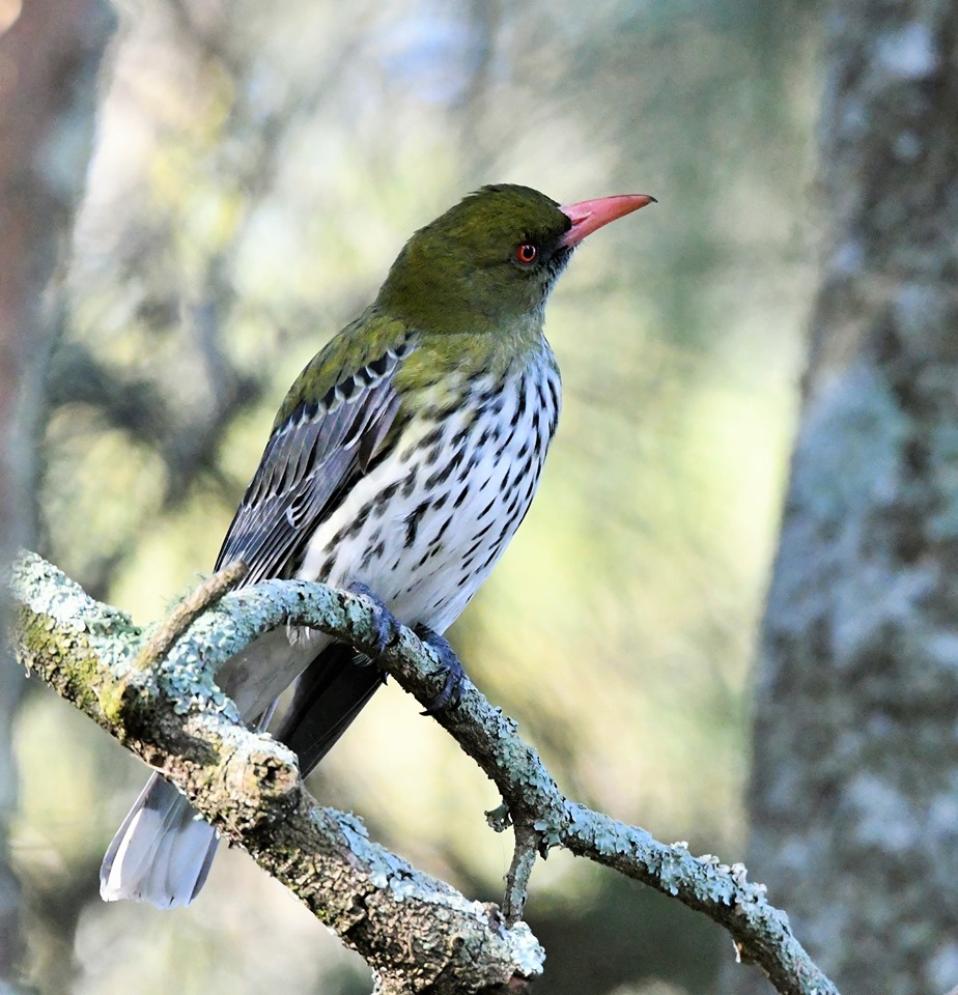
The Ovens, Bangalley Headland
Photo by Adam Crowley, September 13th, 2019
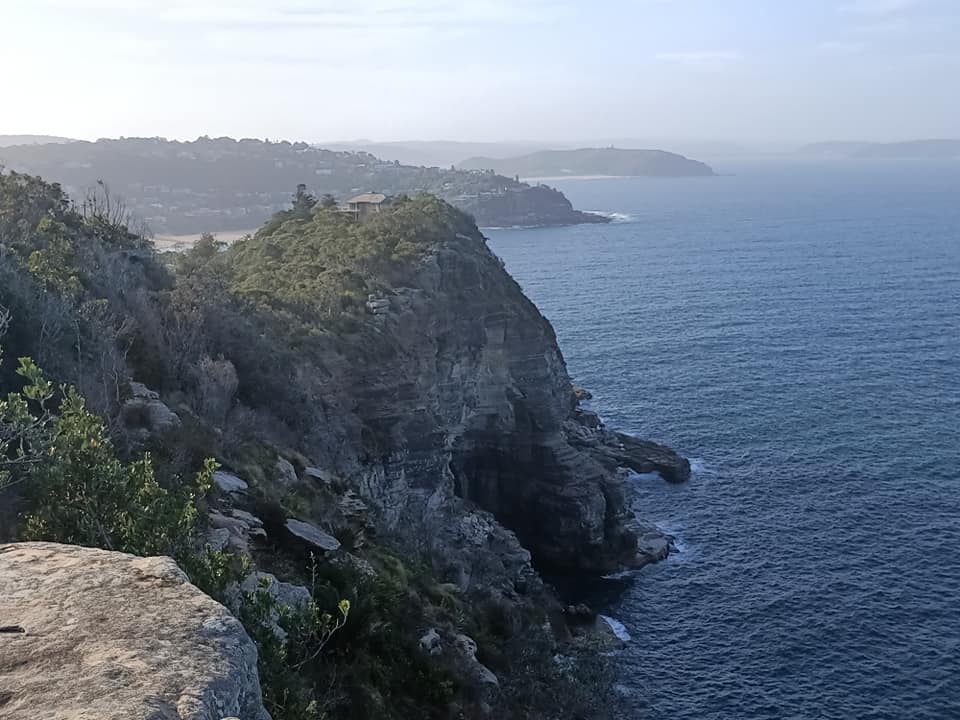
The Ovens - Dive Vid.
By Wild SheNadigans
Newly Discovered Comet Is Likely Interstellar Visitor
September 12, 2019: NASA/Jet Propulsion Laboratory
A newly discovered comet has excited the astronomical community this week because it appears to have originated from outside the solar system. The object -- designated C/2019 Q4 (Borisov) -- was discovered on Aug. 30, 2019, by Gennady Borisov at the MARGO observatory in Nauchnij, Crimea.
The official confirmation that comet C/2019 Q4 is an interstellar comet has not yet been made, but if it is interstellar, it would be only the second such object detected. The first, 'Oumuamua, was observed and confirmed in October 2017.
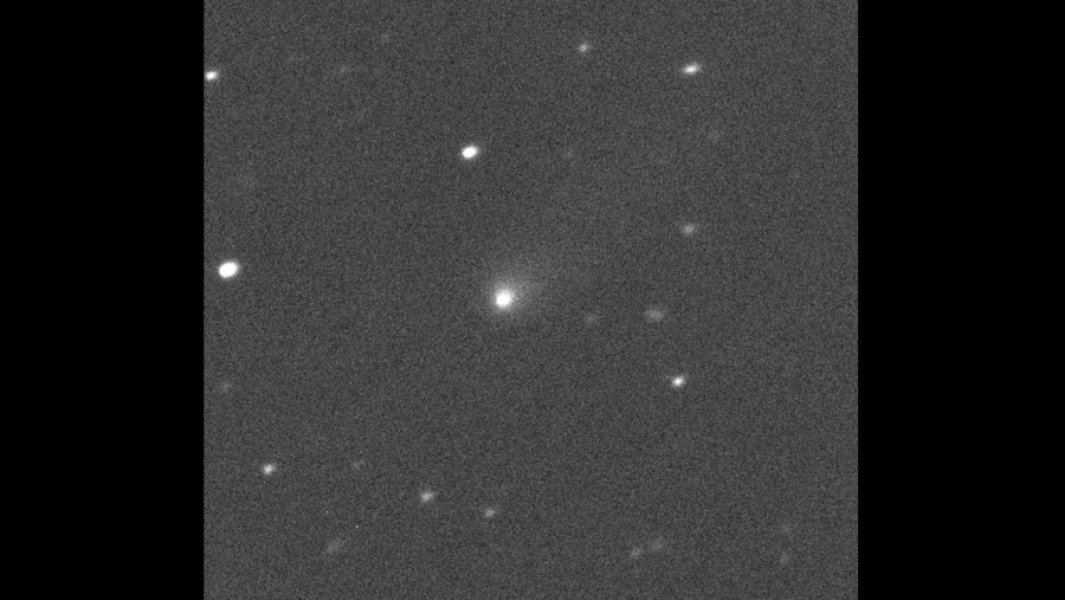
Comet C/2019 Q4 as imaged by the Canada-France-Hawaii Telescope on Hawaii's Big Island on Sept. 10, 2019. Credit: Canada-France-Hawaii Telescope
The new comet, C/2019 Q4, is still inbound toward the Sun, but it will remain farther than the orbit of Mars and will approach no closer to Earth than about 190 million miles (300 million kilometers).
After the initial detections of the comet, Scout system, which is located at NASA's Jet Propulsion Laboratory in Pasadena, California, automatically flagged the object as possibly being interstellar. Davide Farnocchia of NASA's Center for Near-Earth Object Studies at JPL worked with astronomers and the European Space Agency's Near-Earth Object Coordination Center in Frascati, Italy, to obtain additional observations. He then worked with the NASA-sponsored Minor Planet Center in Cambridge, Massachusetts, to estimate the comet's precise trajectory and determine whether it originated within our solar system or came from elsewhere in the galaxy.
The comet is currently 260 million miles (420 million kilometers) from the Sun and will reach its closest point, or perihelion, on Dec. 8, 2019, at a distance of about 190 million miles (300 million kilometers).
"The comet's current velocity is high, about 93,000 mph [150,000 kph], which is well above the typical velocities of objects orbiting the Sun at that distance," said Farnocchia. "The high velocity indicates not only that the object likely originated from outside our solar system, but also that it will leave and head back to interstellar space."
Currently on an inbound trajectory, comet C/2019 Q4 is heading toward the inner solar system and will enter it on Oct. 26 from above at roughly a 40-degree angle relative to the ecliptic plane. That's the plane in which the Earth and planets orbit the Sun.
C/2019 Q4 was established as being cometary due to its fuzzy appearance, which indicates that the object has a central icy body that is producing a surrounding cloud of dust and particles as it approaches the Sun and heats up. Its location in the sky (as seen from Earth) places it near the Sun -- an area of sky not usually scanned by the large ground-based asteroid surveys or NASA's asteroid-hunting NEOWISE spacecraft.
C/2019 Q4 can be seen with professional telescopes for months to come. "The object will peak in brightness in mid-December and continue to be observable with moderate-size telescopes until April 2020," said Farnocchia. "After that, it will only be observable with larger professional telescopes through October 2020."
Observations completed by Karen Meech and her team at the University of Hawaii indicate the comet nucleus is somewhere between 1.2 and 10 miles (2 and 16 kilometers) in diameter. Astronomers will continue collect observations to further characterize the comet's physical properties (size, rotation, etc.) and also continue to better identify its trajectory.
The Minor Planet Center is hosted by the Harvard-Smithsonian Center for Astrophysics and is a sub-node of NASA's Planetary Data System Small Bodies Node at the University of Maryland. JPL hosts the Center for Near-Earth Object Studies. All are projects of NASA's Near-Earth Object Observations Program and elements of the agency's Planetary Defense Coordination Office within NASA's Science Mission Directorate.
More information about asteroids and near-Earth objects can be found at: https://cneos.jpl.nasa.gov and
For more information about NASA's Planetary Defense Coordination Office, visit: https://www.nasa.gov/planetarydefense
For asteroid and comet news and updates, follow AsteroidWatch on Twitter: twitter.com/AsteroidWatch
Sydney Student Among The World’s Science Brains
September 12th, 2019: NSW Dept. of Education
A Chatswood High School student has taken out two medals while representing Australia at the International Earth Science Olympiad in the Republic of Korea.

Anthony Manns (far right) with the members of Team Australia: Tasmanian Imogen Viner, Victorian Jordan Rogers, Canberran Max Etherington, plus team mascot Jeff the placoderm. Photo credit: Leslie Almberg.
Anthony Manns took home a silver medal for the individual theory and practical examination which comprised 10 hours of testing at the competition in Daegu last week.
The Year 12 student also won a bronze medal for his participation in the international team field investigation after working all night with a team of 10 students from different countries investigating the geological history of parts of south-eastern Korea.
Anthony’s strong interest in earth science made him an ideal candidate for the Olympiad.
“You can’t not be interested in earth science,” Anthony said.
“It’s the science of basically everything, all the stuff that happens in the world. If you’ve ever looked at the sky and wondered about the clouds or how rocks form, then you’re thinking about earth science.”
Anthony became involved in the Olympiad after one of his Chatswood High School teachers signed him up for the entrance exam.
“After completing the entrance exam I spent two weeks in Canberra with 22 other participants,” Anthony said.
“I then did a couple of tests and based on those tests I was selected for the Australian team. I was pleasantly surprised.
“I feel like the Olympiad is the greatest opportunity to interact and make friends with people from all around the world."
The Earth Science Olympiad sees top performing secondary students from around the world compete in experimental and theory exams with medals awarded to individuals based on their exam results. It is one of six international science and maths competitions held between July and September each year.
Australia’s International Science and Mathematical Olympiads are run by Australian Science Innovations and the Australian Maths Trust.
Keep Your Options Open And Don’t Ditch Science When Choosing Next Year’s School Subjects
September 9, 2019
by Tracey-Ann Palmer, Lecturer, Initial Teacher Education, University of Technology Sydney
Thousands of Year 10 students are in the process of choosing subjects for their final years of school and half will probably choose to ditch science.
For someone like me who thinks science is one of the most worthwhile things I’ve ever studied, that decision is bewildering.
The downward trend in science enrolments has been watched with concern for decades and is the subject of much research.
But still science continues to be out of favour with teens despite its potential use in a wide range of employment opportunities, beyond the traditional science careers.
Teens live in a world of science
Today’s teenagers have grown up in a world shaped by science. Most don’t know life without the internet and have the world at their fingertips (and parents to help) through computers, smartphones and other connected devices.
Schools are doing what they can to try to teach students the skills they need to prosper in a future that continues to be shaped by science, with increased use of automation, artificial intelligence and so on.
You would think students in this environment would jump at science as a subject that teaches critical thinking and problem solving – just the skills needed in this modern world.
But that’s just not happening.
There are plenty of books written on why students aren’t choosing science and government reports on why we need more science skills, so you might wonder what hasn’t been done.
That’s where my research comes in. I have studied as a scientist, teacher and marketer and I thought the problem might not be science at all, but how students see science compared to the other subjects they can choose. To me it looked like a purchase decision.
How students choose subjects
I wanted to know how students chose their subjects and how they saw science, so I asked them.
Initially, I spoke to 50 students from five New South Wales schools and then 15 adults (careers advisers and teachers) who helped students make their choices. I went to the information events at these schools and reviewed the subject choice documents given to students.
Next, a group of 379 Year 10 students were surveyed to ask about their subject choices. They were asked to rank 21 factors I found students considered when they chose their subjects. These factors included things such as parent advice, teacher advice, enjoyment of a subject, subject difficulty and the expected mark.
What I found was that the students seemed to use a two-stage process to choose their five to six subjects. The first stage was a choice on “love” or “hate” (they used those words). Then, with any subjects left over, they judged the value of the subject compared to the others available.
This value was in terms of how useful a subject was for a career or further study, and how much effort they would need to put in to get good marks. Unfortunately, this is where things go wrong for science.
Science looks like the bad buy
Students reported more often (16 against 7) that they saw science as harder than other subjects, and as harder to get marks. Students didn’t say they wanted to avoid work – it just had to be worth it.
Unfortunately, science has a problem here too. Students repeatedly commented that science wasn’t as useful as other subjects – unless you wanted to be a doctor, scientist, engineer or something similar.
I did not see anything at any of the school subject selection events that countered this idea. This makes science look like the bad buy. It’s seen as expensive in terms of time and effort to get marks, and as having limited use.
Yet science is useful in a range of careers, from carpentry to management and many other roles – basically any career that needs answers backed by evidence. Science helps us to understand and participate in the world in which we live.
But this is not clear to students. Their perception of the usefulness of science is very narrow, so there is no longer pressure to include it as a staple next to mathematics and English.
Seeing the value of science
Knowing this gives us something to work with. Along with all the other great work to help students love science, we can work on their perceptions of the value of science at the time they are choosing subjects.
Schools should invite people from a wide range of career backgrounds to come talk to students to share their ideas on how science is useful in their jobs.
We can also do some very practical things to make sure science is at its most attractive when students are choosing subjects – for example, doing fun work in the lab and not scaring them with any challenging exam just before they choose.
These teenagers do not take subject choice lightly – they know they may be closing the doors on some paths. It would be wrong to convince students to take any subject that’s not right for them, but this is about helping them see the value of science.
If they see that value of science subjects through good information and good experiences then they may decide to stay with science, at least for a couple more years.
This article was published first in The Conversation. Republished under a Creative Commons Licence.